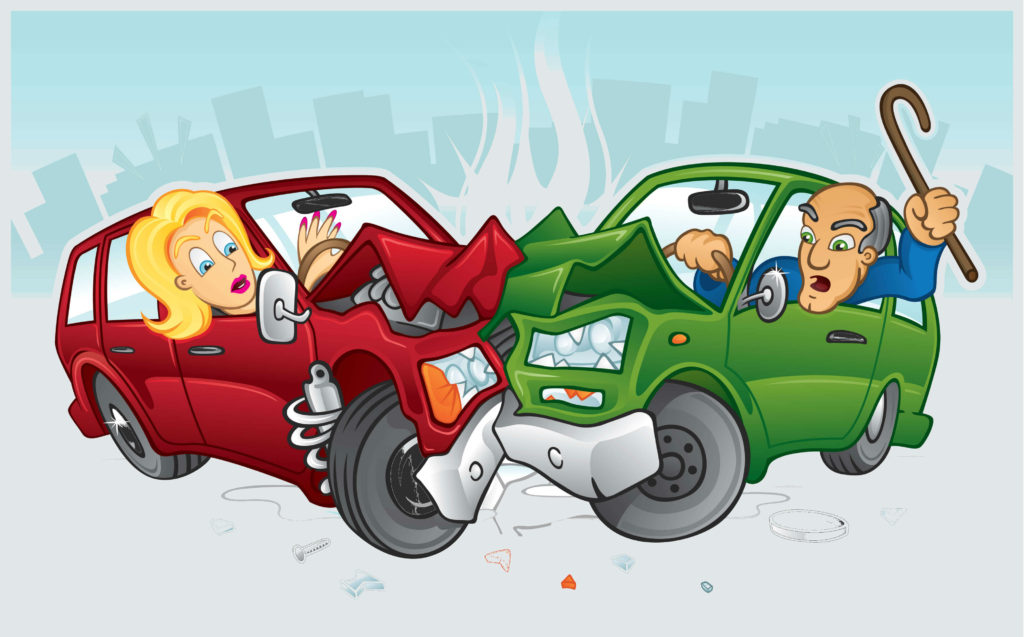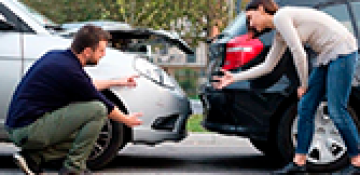Collecting compensation for damages caused by a road traffic accident (traffic accident) is a complex process that involves several key steps. In Ukraine, this process is regulated by a number of legal acts, in particular, the Civil Code of Ukraine, the Law of Ukraine "On Compulsory Civil Liability Insurance of Land Vehicle Owners" and other acts.
- The main stages of the compensation recovery process:
Road accident recording.
• Calling the police: Immediately after the accident, the police must be called to record the incident. The police will draw up a report on an administrative offense and a traffic accident scheme.
• Drawing up the Europrotocol: For minor road accidents (without casualties), the parties can draw up the Europrotocol without the involvement of the police.
•
Appeal to the insurance company.
• Accident notification: The injured party must notify their insurance company about the accident within a specified period (usually within three days).
• Submitting an application: Submitting an application for insurance compensation with the addition of all necessary documents (copies of the protocol, accident diagram, photographs, medical documents, etc.).
•
Damage assessment.
• Expertise: The insurance company carries out an assessment of losses by involving an independent expert. The injured party can order an alternative examination at his own expense.
Obtaining insurance compensation.
• Payment: If the amount of damage does not exceed the insurance company's liability limit, the victim receives insurance compensation.
•
Additional actions in case of insufficient insurance compensation.
Filing a claim against the person responsible for the accident:
• Claim: If the insurance compensation does not cover all the damages, the victim can submit a claim directly to the culprit of the accident.
Judicial resolution of the dispute:
• Lawsuit: In case of refusal of the culprit to pay compensation or disagreement with the insurance company, the injured party can file a lawsuit. In the lawsuit, it is necessary to substantiate the amount of damages, which includes material (car repair, treatment, etc.) and non-material damages (moral damage).
Important points.
• Evidence base: The injured party must collect all possible evidence base: photographs from the scene of the accident, eyewitness accounts, medical documents, etc.
• Limitation periods: A lawsuit must be filed within the time limit established by law (three years from the time of the accident for property damage and one year for moral damage).
Recovery of material damage from the perpetrator of an accident \ recovery of insurance compensation from the perpetrator of an accident - The process of recovering compensation for damage caused by a road accident requires careful preparation and attention to detail. In many cases, it is worth seeking help from a lawyer, who will help to correctly draw up all the documents and protect the rights of the injured party in court.
If you have additional questions or need advice, contact a specialist in legal issues in the field of traffic accidents.
In cases of traffic accidents (traffic accidents), the plaintiff who wants to collect compensation for damage must prove the following facts:
- The fact of the accident.
• Documentary confirmations: Police report, road accident scheme, Europrotocol (if it is issued).
• Photographs from the scene of the incident: Photographs of vehicles, scene of the incident, damage.
The fault of the defendant.
• Report on an administrative offense: A report drawn up by the police stating that the defendant violated traffic rules.
• Court decision or administrative body decision: If there is a court or administrative body decision that establishes the fault of the defendant in the traffic accident.
Damage done.
• Material damage: Documents confirming the cost of repairing the vehicle (invoices, reports of work performed, expert assessment), costs of treatment and rehabilitation (medical bills, doctors' opinions).
• Non-material (moral) damage: Evidence confirming psychological or physical discomfort caused by a road accident (testimony, medical reports, expert assessments).
Causal connection between the actions of the defendant and the damage caused.
• Expert opinions: The results of an auto technical examination, which confirms that the damage to the vehicle or the injuries of the victims occurred precisely as a result of the road accident involving the defendant.
• Medical certificates: Confirmation from medical institutions about the connection of injuries with road accidents.
Important points.
• Testimony of witnesses: Can be used to confirm the circumstances of the accident and the actions of the parties.
• Video recordings: Recordings from surveillance cameras, video recorders, etc., which recorded the moment of the accident.
• Insurance documents: Statements and responses of the insurance company regarding the payment of compensation, conclusions of insurance experts.
Proof procedure.
1.Gathering evidence: The claimant must gather all possible evidence to support his claims.
2. Filing a statement of claim: The statement of claim must indicate all the evidence collected, as well as a clear justification of each fact.
3. Trial: During the trial, the plaintiff presents his evidence, the defendant has the right to refute them or submit counter-evidence.
4. Court decision: The court evaluates the presented evidence and makes a decision on satisfaction or refusal to satisfy the claims.
Recovery of money from the perpetrator of an accident \ recovery of depreciation from the perpetrator of an accident - It is important to remember that the process of proof in cases of road accidents is complex and requires careful preparation, so contacting a qualified lawyer can significantly increase the chances of success.
In road traffic accidents (traffic accident) cases, the defendant must prove the following facts if he denies his guilt or believes that the amount of damage caused is exaggerated:
- Absence of guilt.
• Adherence to traffic rules: The defendant must provide evidence that he was acting within the bounds of traffic rules at the time of the accident.
• Testimony of witnesses: Involvement of witnesses who can confirm that the defendant did not break the rules and is not to blame for the accident.
• Video recordings: Recordings from video recorders or surveillance cameras that can confirm compliance with traffic rules or indicate a mistake by the claimant.
Causal relationship.
• Expert opinions: Automotive technical expertise that can show that the defendant's actions were not the cause of the accident or that the accident occurred due to other circumstances (for example, a technical malfunction of the plaintiff's car).
• Alternative causes: Evidence pointing to other possible causes of the accident that are not related to the defendant's actions (eg, bad weather conditions, road surface failure).
The extent of the damage.
• Dispute the amount of damages: The defendant may provide alternative expert estimates of the cost of repairs or treatment that show that the claimed amount is overstated.
• Repair documents: Evidence that the damage claimed by the claimant existed before the accident or is the result of other events.
The claimant's own contribution is possible:
• Claimant's fault: Evidence that the claimant also violated traffic rules and his actions contributed to the accident.
• Co-responsibility: Testimony or evidence confirming the claimant's partial responsibility for the accident.
Important points.
• Counter-evidence: The defendant must provide counter-evidence to all the plaintiff's accusations that it considers unfounded.• Legal support: As in the case of the plaintiff, qualified legal assistance can significantly increase the chances of success in the case.
•
Defendant's defense procedure.
1. Analysis of the claim: The defendant, together with his lawyer, analyzes all the evidence presented by the plaintiff and identifies weak points.
2. Collection of counter-evidence: The defendant collects all possible evidence that refutes the plaintiff's arguments.
3. Preparation for the trial: The defendant prepares his position, witnesses, expert opinions and other necessary documents.
4. Participation in the court process: The defendant actively participates in court sessions, presents his evidence and arguments.
Recovery of damage from the perpetrator of an accident through the court / claim for the recovery of damage from the perpetrator of an accident - Thus, the defendant in cases of road accidents is obliged to prove his lack of guilt, the absence of a causal connection between his actions and the damage caused, the amount of damage caused, as well as the possible contribution of the plaintiff to the occurrence of the road accident. This requires careful preparation and, as a rule, the involvement of specialists from various fields (automotive experts, medical experts, etc.).





























